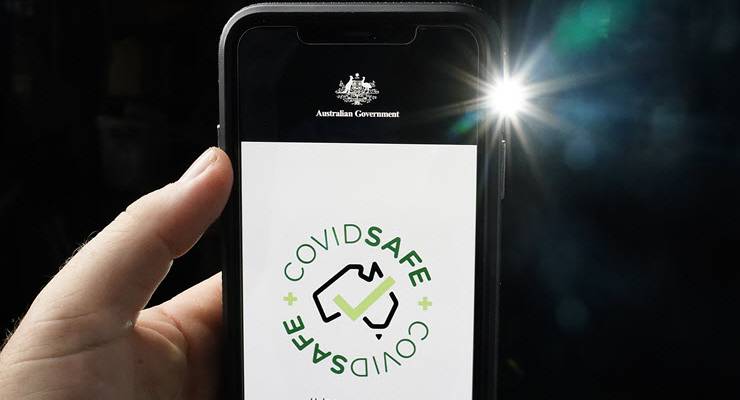
More than $2 million has been spent on the government’s COVIDSafe app, though it’s yet to find any close contacts of an infected person who had not already been identified manually.
The app has been downloaded 6.65 million times since it launched on April 26 — meaning just one in four Australians have it on their phones, at most.
Experts say compatibility issues with the app, combined with users not using it properly and the source of recent COVID-19 clusters, mean the app had little chance of limiting the virus’ spread.
What has the return-on-investment been like?
- Development cost: $2,215,303.81 from conception until June 30.
- Marketing cost: Unknown. A spokesman for the Department of Health did not respond to Crikey’s request for comment by deadline.
- Downloads: 6.65 million as of yesterday.
- Unique cases identified: None.
The app, which was supposed to “speed up and industrialise the tracing that is otherwise done manually”, was unlikely to have identified any cases in Melbourne faster than manual contact tracers were able to, experts say.
It uses bluetooth to recognise other uses within a 1.5-metre radius. Users then have to alert the app if they have tested positive for coronavirus.
Even if every single Australian had the app downloaded, it’s still plagued with problems. One study found while 85% of users registered the app and kept bluetooth on, the app only had an effective usage rate of 61% thanks to issues with iPhones. Locked iPhones can’t be logged by the app, and many people didn’t turn bluetooth on, which is necessary for the app to work.
There have been a total of 3303 coronavirus cases in NSW, though a NSW Health spokesperson confirmed data from the app had been accessed just a dozen times.
“We have not identified any close contacts who would not also have been picked up by manual contact tracing,” they said.
The Nine papers report no contacts had been identified solely through the COVIDSafe app in Victoria, and no one diagnosed with the virus in Queensland and South Australia had downloaded the app.
‘Wishful thinking’ in app efficacy
Sydney University head of discipline for biomedical informatics and digital health Adam Dunn told Crikey that downloads were a poor measure of the efficacy of contact tracing apps for a number of reasons. For example, those downloading the app are more likely to be the ones following social distancing and quarantine rules.
The app has to be running, with bluetooth less effective indoors where transmission rates are higher. Finally, people have to be registered on the app before they are tested for COVID-19.
“The app has several critical limitations that make it largely ineffective relative to other much simpler methods,” he said. “Given how obvious [those issues are], I was shocked that anyone thought it could be a cost-effective way to support contact tracing.”
Melbourne’s clusters were unlikely to have been contained if everyone involved had the app working, he said. “Until recently most of the transmissions in Australia have occurred through close contacts inside houses where the app was not needed to trace contacts.”
Melbourne University Institute for International Law program director James Parker told Crikey the government focused on the app instead of on behaviours.
“There was this rush to a tech solution, despite the fact there wasn’t any evidence the tech would provide a solution,” he said. “There’s no evidence other than wishful thinking that this app would work.”
Apple and Google have launched contact-tracing software for government agencies to develop their own apps. The interface uses decoded data and, unlike Australia’s bluetooth model, does not require contact tracers. The UK has said it will switch to this model.
Plateau in downloads
Melbourne University psychology professor Simon Dennis told Crikey a fresh wave of downloads of the app wasn’t likely.
“[Downloads] have plateaued quite dramatically. The vast majority of people surveyed in the last wave downloaded in the very first day or first week and there hasn’t been very many since then,” he said.
About 86% of participants downloaded the app in the first week. At the time, there was a huge advertising campaign with politicians publicly vouching for the app.
“There may be a little bit of an organic rise in downloads,” he said, before adding another marketing campaign was necessary if the government wanted to see a steep uptick.
While earlier in the pandemic users reported downloading the app to protect their and others’ health, recently motivations have changed. “People reported downloading the app so they can resume normal activities,” Dennis said.








Health Minister Greg Hunt needs to dump his dud version and rebuild it using the Apple/Google API that solves the connection issues. The trouble is the Apple/Google model is decentralised. It tells you, not the government, when you have been in contact with an infected person. For some reason they don’t like that.
The good thing is that the government did think of using technology to assist in tracing people.
If there had been some pandemic planning then this would have been well thought out, issue free and ready to go. But the current application was put together hastily and has issues.
Wonder if the current government will be as ready to review the preparedness of OZ to meet a pandemic and the implementation of any such plans.
It must be close on thirty years now since I coined my own little witticism “Ah, the IT industry, they promise you the earth…, and sure enough, they dish up dirt.” Perhaps if John Howard hadn’t destroyed in-house IT capability in the Australian Public Service, it might not be such an ass in these matters nowadays.
Nice one Norm! 🙂
It was only ever a marketing ploy, the government wanting to appear to be doing something useful, when actually doing something useful was quite beyond them.
What was Scotty doing before politics?